Brooklyn Court, 153 Route des Soeurs (today Ruijin Er Lu) has attracted my attention for a number of years. Although not outstanding on the outside, the multistorey appartement building designed by an Austro-Hungarian team of architects has very nice feature inside (see post “Return to Brooklyn Court” for more details). It was built and owned by ARCO (Asia Realty Company).
My interest was first raised in this underrated building with the discovery many years ago of an original rental contract for an appartement in Brooklyn Court from 1938. Above picture shows the cover of the folded document, a Lease Contract between Asia Realty Company Federal Inc USA and Mr Char Kee Chow from Aug 16th 1938 for 67 dollars per month. The document inside the folder is actual the renewal of the contrat from October 5th 1939. A 17% was added to the rent for water (!).

Being in real estate myself, this attracted my attention as the rental contract is not much different than rental contract nowadays. The lessee was responsible for fees and taxes, using only the apartment as residence (though a law firm was registered in the same building and probably using their apartment as an office) and sub-letting was not allowed. The tenant was also not allowed to make alteration or to place any kind of sign on the exterior windows. Just as today, he was responsible for the interior and decoration. In case of need, they could always use a construction company like “Gordon & Co“.
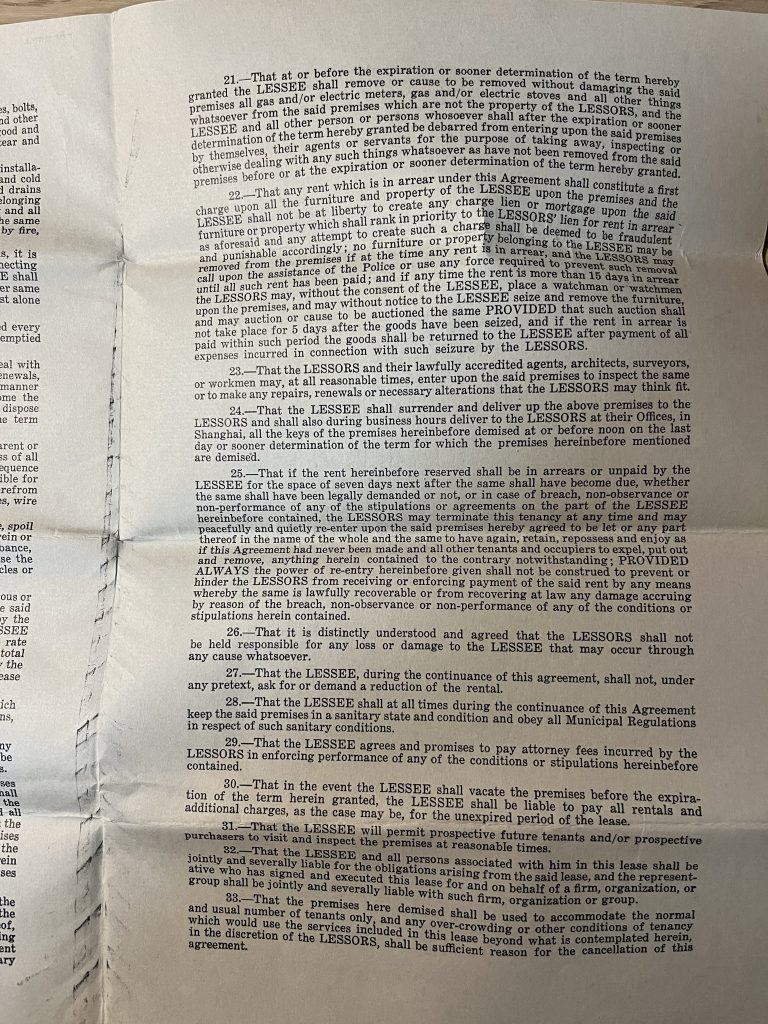
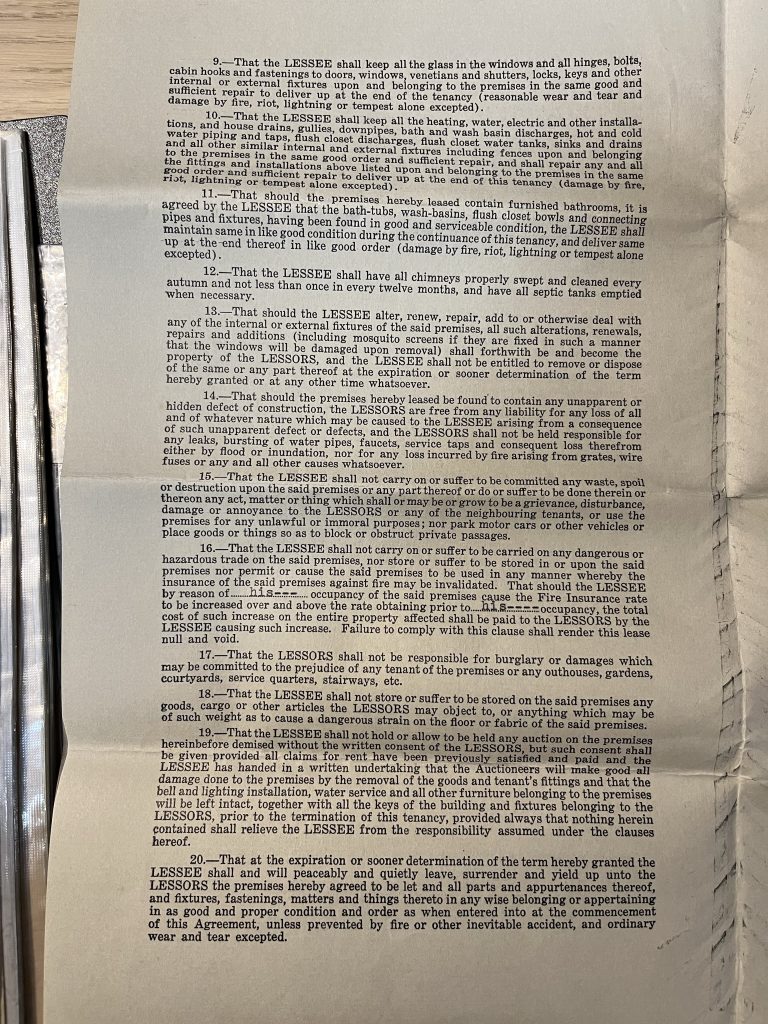
What was is surprising is article 19, where it is specifically mentioned that an auction cannot take place in the apartment without the written consent of the owner and if all bills had been paid. It seems that this kind of auction of all properties in an apartment was quite common. Probably when people left Shanghai, they would sell off there properties to raise cash. Maybe this kind of sales also happened if they left and did not come back, for whatever reason. This is reinforced by article 22, stating that all furnitures can be used to guarantee rental debts, and that no furniture can be removed without the authorization of the apartment owner, with a watchman possibly being appointed if rent is overdue by more than 15 days, presumably so that personal effects in the apartment cannot be removed without paying the overdue bill. I found reference to such house auction while researching auction house Noel, Murray & Co in post “Letter from Hugh Martin“.
Article 32 even mentions that the representative of an organisation renting the premises is personnaly responsible for paying for it in case the organisation does not settle the bill. The practice of disappearing without paying rent overdue must have been common in Old Shanghai, for all these closes to be inserted. It was also possible to have a guarantor for the rent, which was governed by article 34 and 35.
The most surprising for a rental contract in Shanghai, was that “questions and dispute arising out of this lease shall be determined on the basis on the Laws of the United States of America”. The principal or extraterritoriality that allowed foreigners from major powers in China to be treated under the law of their country was also applied to companies. So an American Court, at the general consulate, would decide on a dispute between lessor and a foreign tenant, or the mixed courts of the French Concession if the tenant was Chinese. It is also added that “the customs usually observed in Shanghai shall be taken into consideration”.
Finally, two specific points were added with a typewriter, one giving a one month notice for both parties and the other stating that French Concession taxes up to 13% were included in the rental price. The rental contract was signed by a manager at ARCO (signature not readable), witnessed by Adina Villers.
Becoming curious about the 43 Brooklyn court, I went in to find the actual apartment covered by the rental contract. A friend owning a flat in the same building allowed a visit to his 2 bedroom with a large dining room / kitchen. Flats in the building seem to be all the same, about 60 sqm 2 bed rooms.
Apartment 43 is facing the back of the building (see post “Return to Brooklyn Court” for outside picture). Unfortunately, the original door has been replaced, but a number of flats still have the original door with peephole and top ironwork allowing for air circulation, while keeping the place secure.
I could not get into apartment 43 but I now have a good impression on how its door and interior looked like in 1939.
For more information about Brooklyn Court, go to posts “Brooklyn Court, Route des Soeurs” and “Return to Brooklyn Court“. For more information about Old Shanghai real estate, go to page “Old Shanghai real estate“.
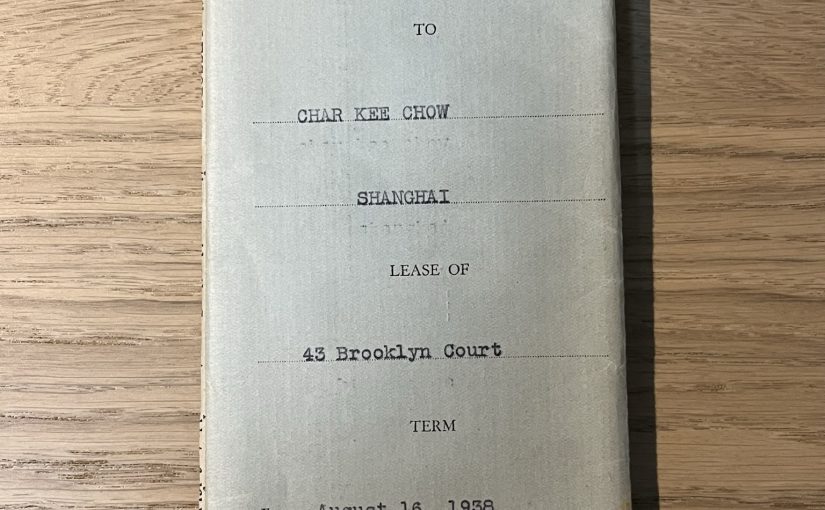
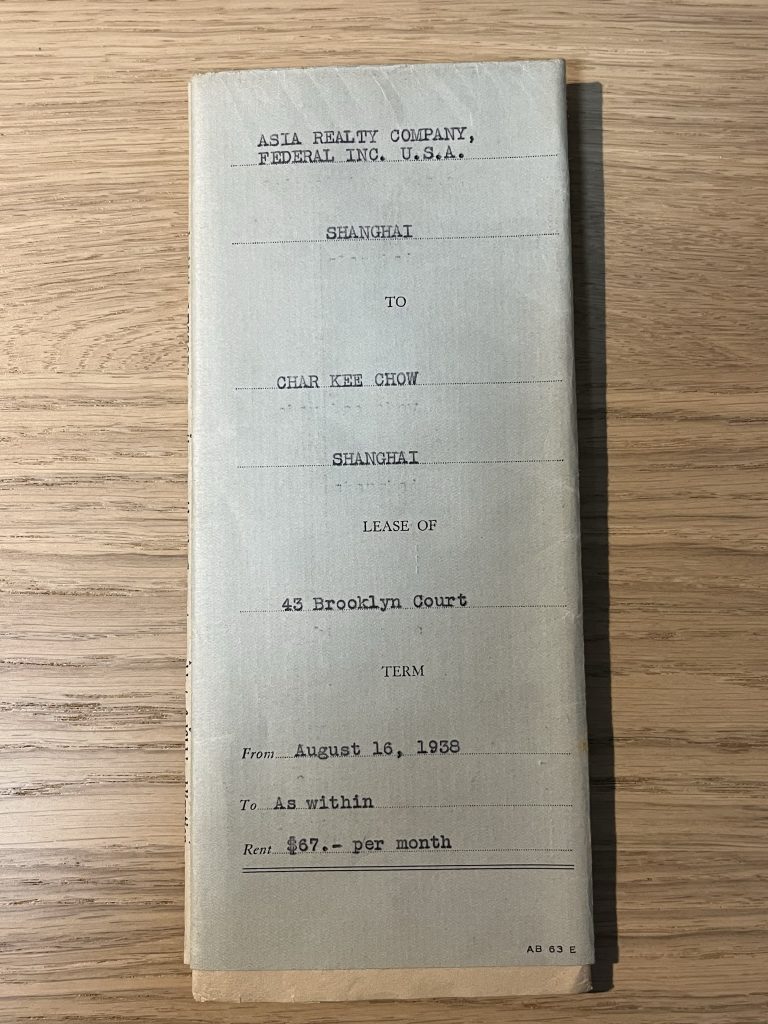
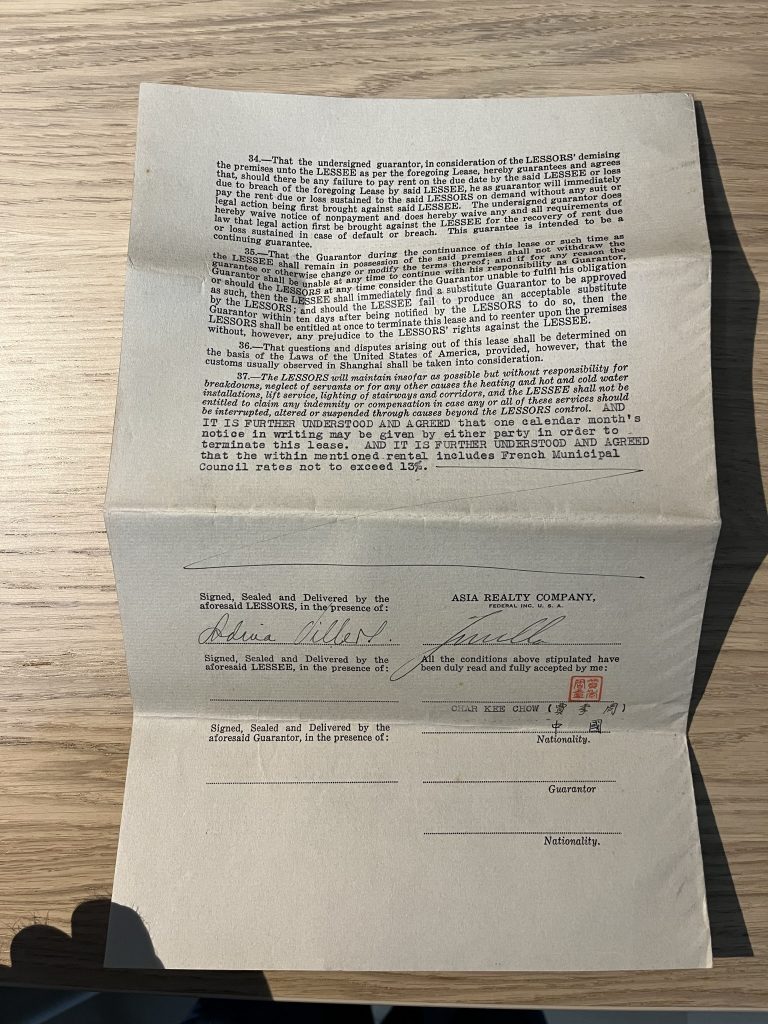
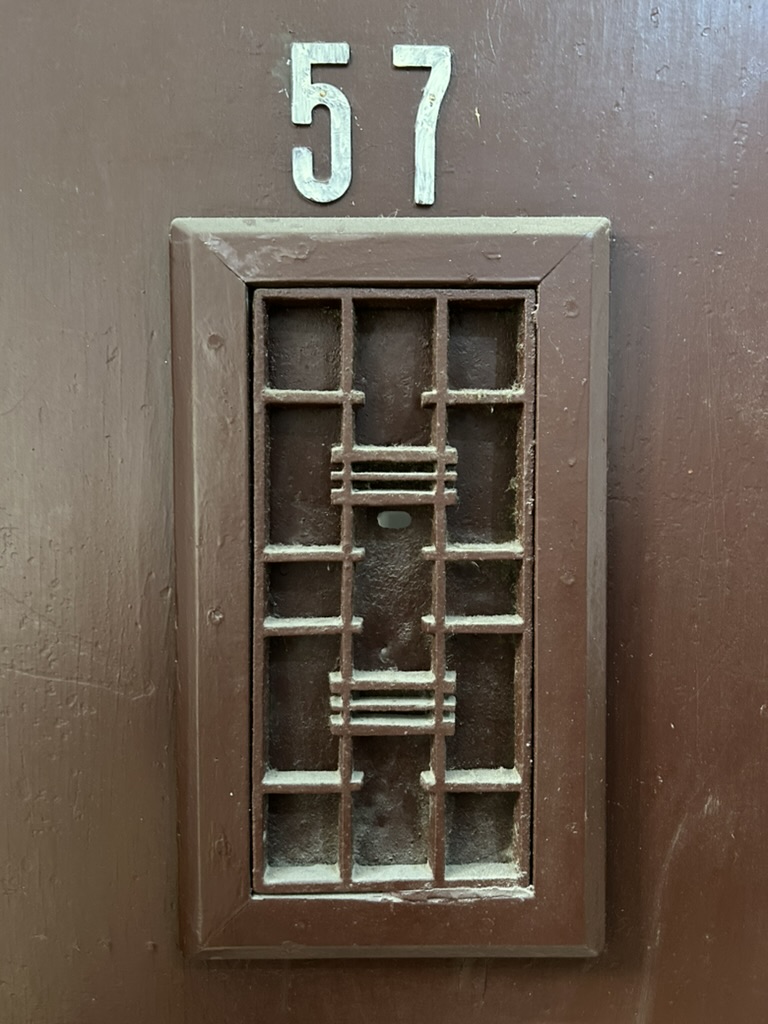
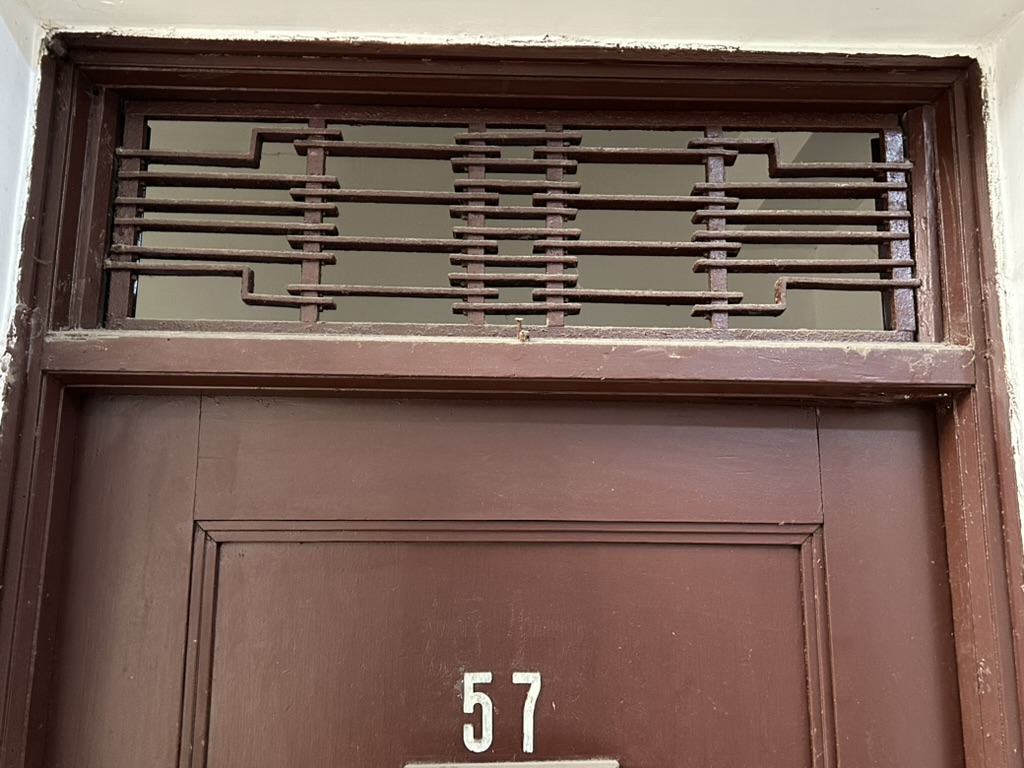
Reading with interest, your post about Brooklyn Court. Near the end I noticed the document witness, Adina Villers. She and her husband Eric ( who worked with Shanghai Fire Brigade ) were friends with my family in Shanghai. They lived at 295 Avenue Road and were both in Lunghwa Camp from 1943 until 1945. Some of my family were also at Lunghwa.
My grandfather had a home at Columbia Circle, and was in Lincoln Road Camp during the occupation.
After the war the Villers came to Canada and bought a home in West Vancouver. My mother and I had immigrated to Vancouver in 1947 and would visit them often .
Another name that I recall from family conversations was “Bills Motors” the Ford dealership at Ave Foch. Fred Bills was American but also came to Vancouver after the war and started a chain of take-out hamburgers called “King’s Burgers”. You could get five burgers for under a dollar! I believe Adina Villers also worked for Fred Bills here in Vancouver.
Fascinating. I am surprised that the rental contract was so comprehensive by then, with even more details than today by certain aspects. The article about ‘auction’ is indeed a funny one. I guess some tenants could have been tempted auctioning a few more items belonging to the landlord as a ‘bonus’ before their discreet departure! Not sure the clause about sublease would always have been respected, knowing all the housing crisis that Shanghai went through (although 1938-39 were times when people were more trying to leave Shanghai, I guess).
God knows what I would give to spend a few days in Shanghai back in those times! Thanks for the glimpse of such a time travel with this article! – David
Superb article. Thank you!
1/ Interesting detail: standard lease contracts in HK today are nearly in the same format, letter font and with the same terms as the contract you have shared. I have copies of my old leases in HK. I will try to dig them out and share with you.
2/ CHAR KEE CHOW (賈季周)seems to be three surnames added together rather than one name. Perhaps the lessee was a Chinese law firm or some form of business partnership. But then again, there should be a term such as “Ltd. Co.” or the like behind the name. It would be interesting to dig deeper and see who or what was Kar Kee Chow.